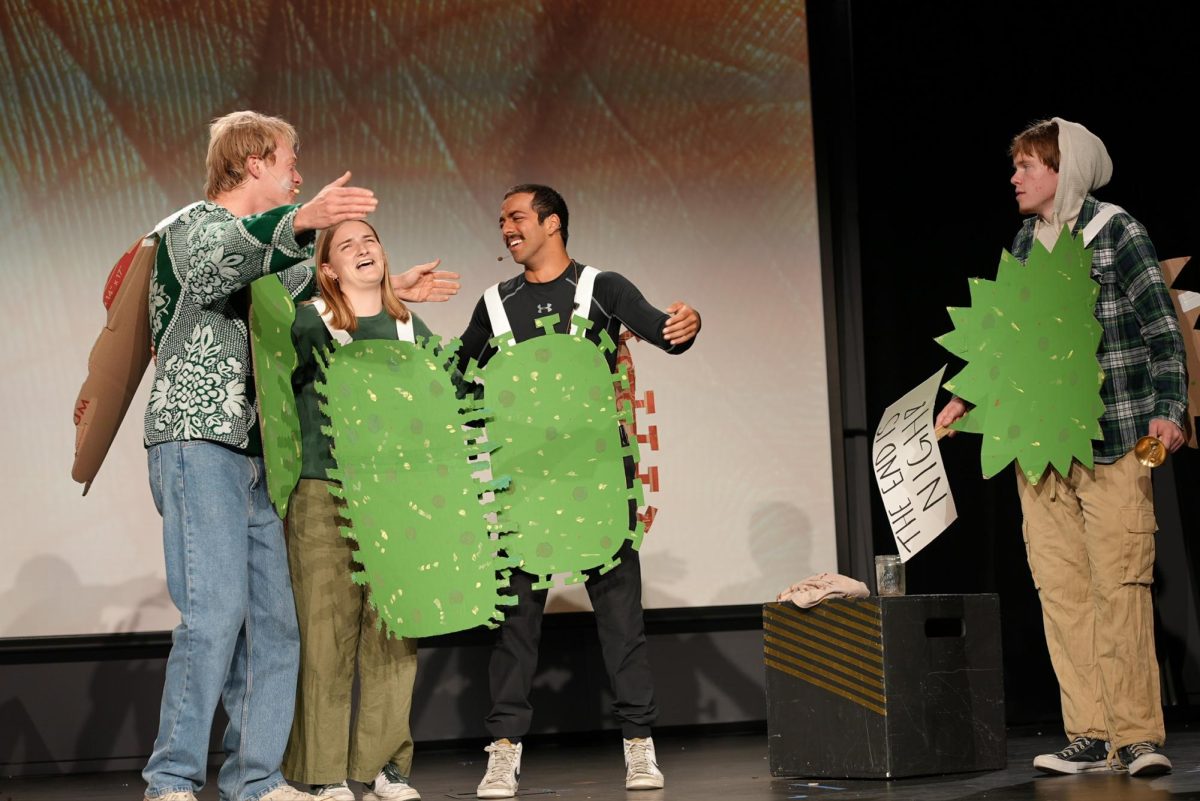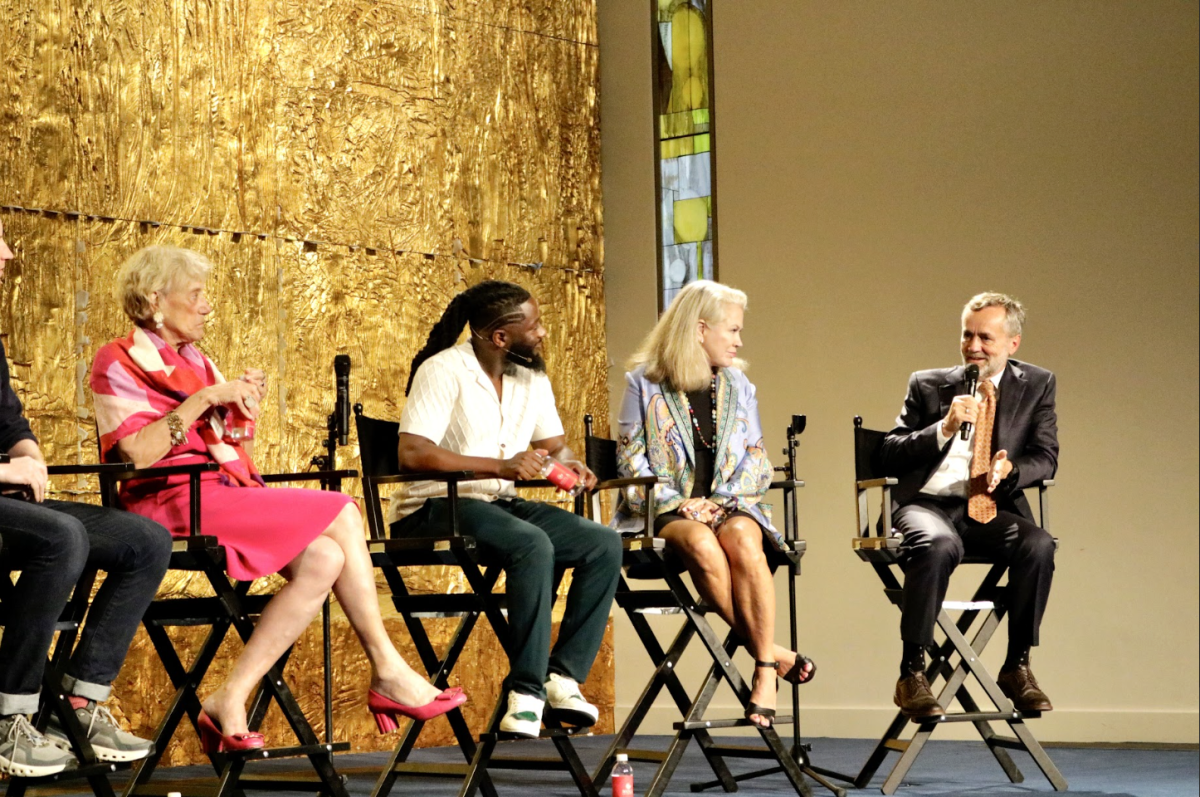It isn’t a stretch to say that “The Hunger Games” series is in the next generation of franchises to beat. The three books themselves stand out as a point of frenzy for readers worldwide. Originally intended for young adults, people of all ages have adopted Suzanne Collins’ trilogy as the next best thing, taking the place of past crazes like “Harry Potter” and, I’m forced to say it, the “Twilight” saga. Fortunately for us, the quality of its cinematic incarnation seems to be at a caliber that far exceeds past patterns of the same kind. Surely I won’t be scorned for saying the “Twilight” movies were gargantuan, ugly failures. “The Hunger Games” does not follow this trend.
Movie plot stays true to book
My first praise is this: rarely is a film so true to its source material. This is due in part to the fact that Collins helped pen the script with its director, Gary Ross. I read the first book of the trilogy cover to cover by the movie’s midnight premiere, which I attended. With the novel so fresh in my mind, I went into the theater with a certain level of expectation. I was not disappointed. With actors who perfectly embodied my perceptions of the characters and dialogue that never erred on the side of corniness, I was overjoyed by the film’s legitimacy.
For those who don’t know, “The Hunger Games” is set in a distant, totalitarian future. However, it’s a future that seems deeply rooted in the past. Though it does not adequately explain it in the film, all of North America has been transformed into the singular nation of Panem. Governed by the artificially beautiful and tyrannical Capitol, 12 districts lie at its feet and submit to its annual display of power called, you guessed it, the Hunger Games. 24 “tributes” between the ages of 12 and 18 are randomly selected to participate, one boy and one girl from each district. They are swept to the Capitol for three days of training and assessment, then thrust into the arena where they will fight to the death. The lone victor will win the prestige of the title as well as great honor for his or her district.
The games are a way of showing the districts how powerless they are against the Capitol, as explained by the story’s heroine, Katniss Everdeen (Jennifer Lawrence). A beautiful huntress from the Appalachian District 12, Katniss is compelled to volunteer for the games in place of her younger sister Prim (Willow Shields), whose name is inexplicably drawn from the lottery in her first year of eligibility. The boy selected is Peeta Mellark (Josh Hutcherson), who shares somewhat of a history with Katniss. This mysterious relationship between the two protagonists supplies the central drama of the plot. So, with no time to lose, both tributes are taken straight to the dystopian Capitol, which seems to be built at the foot of the Rockies, and the games soon begin.
Camera movement adds to suspense
The production design for “The Hunger Games” is breathtaking and, yet again, another facet of the project that fleshed out the book so flawlessly. On this similar technical note, however, comes my first criticism: the cinematography. For anyone not familiar with moviemaking terminology, “shaky cam” is a method that looks exactly how it sounds. Usually intended to portray suspense, distortion or grittiness, camera shake can be very effective in proper contexts. Yet for the first hour or so of “The Hunger Games,” I was wondering if the camera operator was either a small child or an 80-year-old man. The amount of quivering combined with the shallow depth of focus was extremely disorienting and distracting. On top of this, it made the editing look sloppy in certain sections. But then, what did the editor have to work with but one incoherent clip after another? It’s a miracle the audience was able to understand the progression of the first act in the midst of this bizarre filmmaking choice.
Ross is a veteran director, having helmed such features as “Seabiscuit,” “Pleasantville” and “Big.” The movie wouldn’t have been cut, printed and released unless he wanted it to look exactly as it does. Indeed, the framing of the film moves steadily into wider shots that are more stable and less erratic, especially when the narrative transitions into the actual games that take place in a manmade arena of jungle. Perhaps Ross and his cinematographer were seeking to express the development of story and character by moving from extreme close-ups, blurry focus and draconian shake into more consistent shots of fully framed action. Whatever the intention, I have to disagree with its execution. While leaving the theater, I heard countless people, who had seconds before been singing the film’s praises, say as an afterthought, “but what was up with all that shaking?”
Save for these aesthetic shortcomings, the movie at its core was a work of great precision and depth. I have to wonder if someone who hasn’t read the book would have been able to keep up with the pacing and underdeveloped explanations of the Capitol’s hierarchy, or even the somewhat ambiguous, underwhelming “cliffhanger ending.” But then, who is a movie really for if not the avid fans of the book from which it was made? Lawrence plays Katniss with explosive emotional energy, and even the often-dry Hutcherson pulls out the stops to take on the quiet intensity of Peeta. I enjoyed “The Hunger Games” for its content, and look forward to seeing if the next two books are brought to life in as vivid a way as this.







